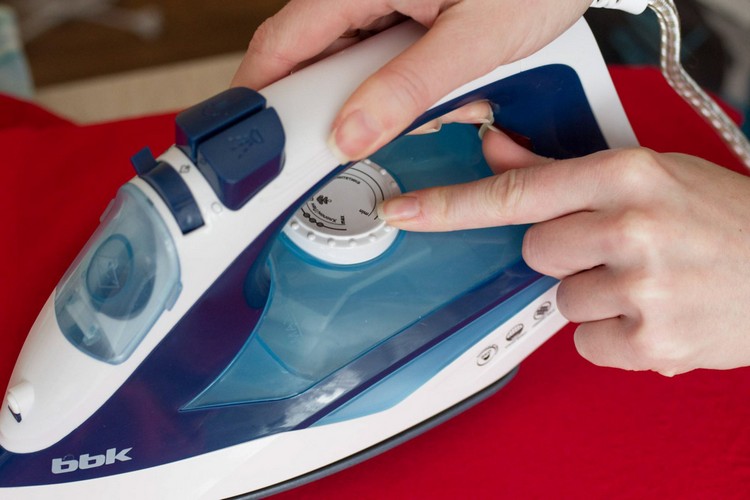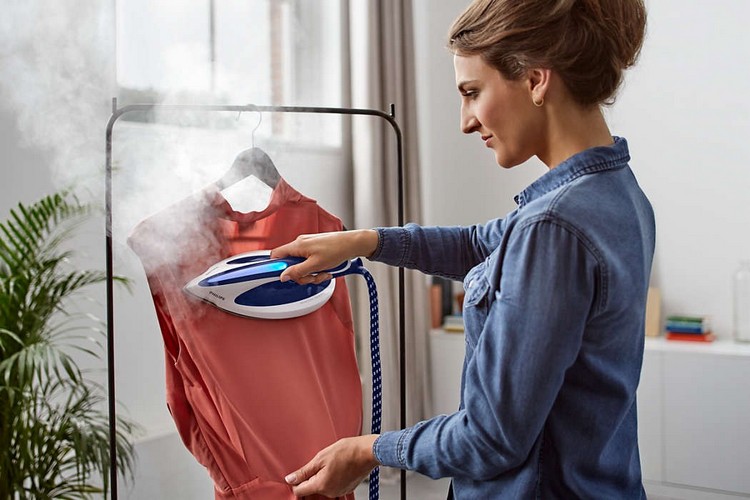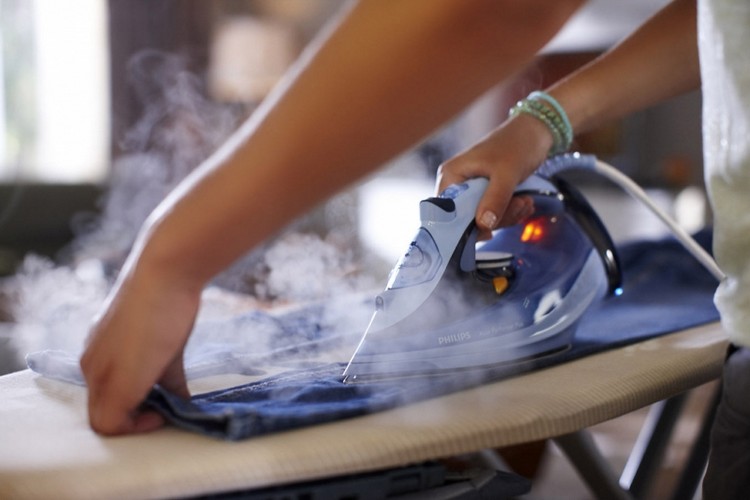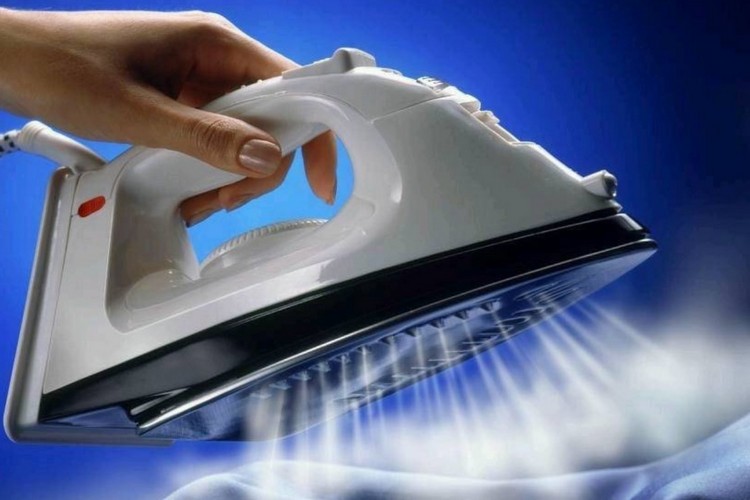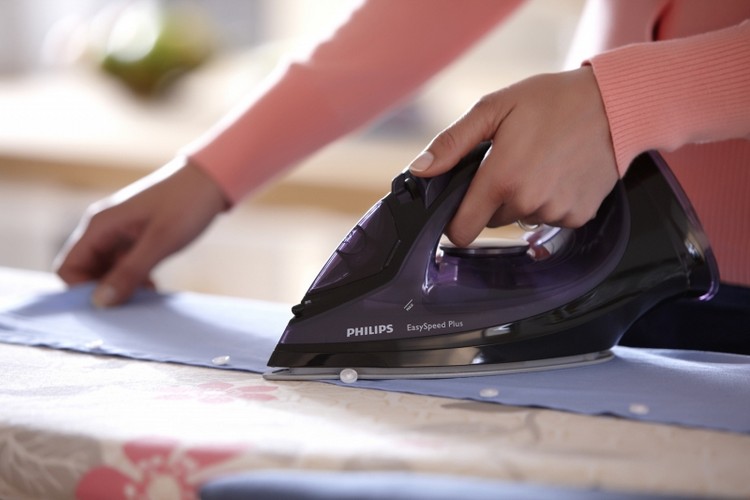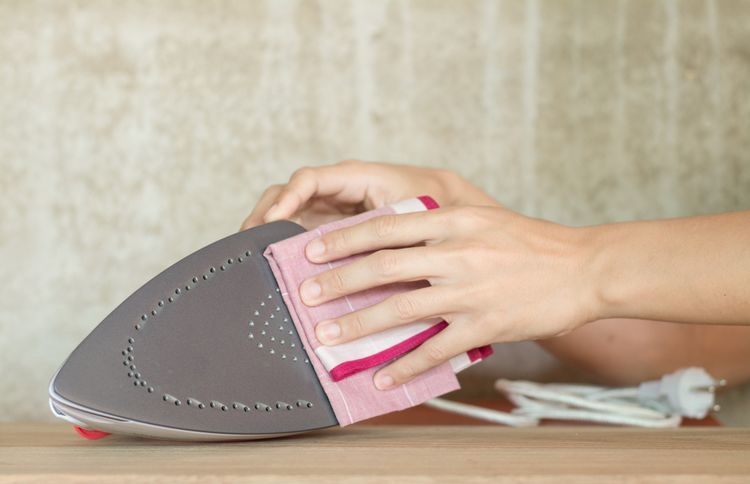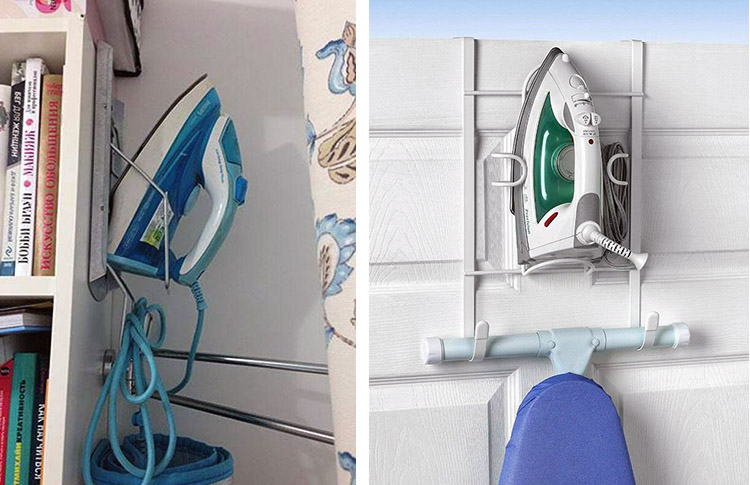Instructions on how to use the iron: steam or regular
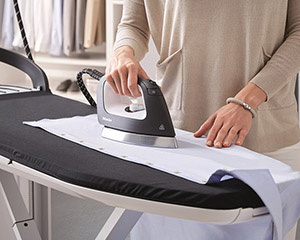 An iron is an indispensable device in any apartment. With it, you can give things a neat appearance.
An iron is an indispensable device in any apartment. With it, you can give things a neat appearance.
However, not everyone knows how to properly use an iron.
Most people think that such a simple device is resistant to all external influences, but it is not. Proper care of the iron ensures the longevity of its operation.
Before using the device, heed the tips below.
Content
How to prepare for ironing
First, turn on the iron to the desired mode.
Each fabric has its own ironing requirements. For example, to iron wool, you need to stop at 100-120 degrees Celsius, and cotton can be ironed at a temperature of 140-170 degrees.
The following materials should be ironed at these temperatures:
- Cotton with polyester - 140-170 degrees.
- Silk - 80 degrees.
- Linen - 180-200 degrees.
- Viscose - 120 degrees.
- Chintz - 170 degrees.
All indicators are maximum temperature values. Deviations of 10-20 degrees below are considered the norm.
Next, you should fill the tank with water. Not available for all models, but if you have the option, do so. Water is needed for better steaming of things; after ironing, they will look even better.
If you have a new iron, then never direct the steam jets directly onto the laundry, because the steam chamber may be dirty. First, we recommend pouring water into the compartment, then release a jet of steam and proceed with ironing. Users usually have no problem opening the water tank.
Pour liquid only when the device is unplugged. Do not neglect the safety rules.
Experts advise to pour out the water from the iron immediately after ironing the fabric and leave it in an upright position.
Ironing with vertical steam
Irons currently being produced have a vertical steam function. It helps to smooth out even the thinnest parts of the fabric that do not tolerate the hot sole of the device.
It is used for tidying outerwear, smoothing curtains, as well as for thermal disinfection of fabrics, toys, delicate furniture, etc. The scope of vertical steaming is almost unlimited.
Using a vertical steam iron is very simple:
- Pour cold water into the tank and turn on the machine. The device has a special regulator that shows the modes of steam supply. Choose the option you need.
- The liquid begins to heat up quickly (several minutes), after which it evaporates. Steam comes out of small holes on the soleplate. Pressing the button is accompanied by a steam jet.
- To flatten a garment using the vertical method, hang it on hangers or any similar hanger. Stretch the fabric with one hand and try to move from top to bottom with the iron in the other hand. It is not necessary to smooth things from both sides, as the steam penetrates deep enough.
This method is ideal for steaming curtains and delicate fabrics that cannot be ironed with any other method.
Some models have different steam settings. They are divided by the power of steam supply, as it all depends on the type of fabric. For example, the power when ironing silk should be less than if it were cotton or wool.
Ironing with continuous steaming
For large volumes of fabric, ironing with continuous steaming is useful. Not all irons can provide this option, as it depends on the dimensions of the tank.
Continuous steaming helps to smooth out the smallest wrinkles. Also, the method is suitable for things sewn using delicate materials that do not tolerate the touch of a hot sole. The ironing method is used during the processing of curtains, curtains, furniture capes.
In addition to the above, you can use a special steamer.
There are household and stationary models, divided into manual and floor. For work in an industrial area, stationary devices should be used, while for everyday purposes, household devices will do. A handheld steamer can be taken on a trip (in this case, it is better to purchase a model with a long cord).
Ironing with a burst of steam
This ability is present in almost all models of modern irons.
If you cannot smooth out a small crease, and even high power does not help, you can use a steam boost. It can be activated by pressing a special button, often located in the middle. When pressed, a jet of high-pressure steam escapes from the soleplate. Eventually the crease flattens out.
Pay attention to the steam rate, as it significantly affects the result.The most effective speed remains 90-120 g/min.
Compared to the constant steam method, the impact is not constant. It takes 20 seconds to “recharge” to create and accumulate new steam. However, if you are the owner of a large model with a steam generator, you don’t have to worry about this: your iron delivers steam in large quantities all the time. This is useful for bulky clothes with a lot of folds, as well as for those materials that cannot be smoothed out in other ways.
Dry ironing
Dry ironing is the simplest and most common way of ironing fabrics.
It does not require special steamers or water tanks. Simply set the desired temperature and start the process. Keep in mind that for each fabric, the temperature is selected separately. Follow manufacturer's label directions.
You can iron in this way both durable materials (cotton, linen) and fabrics that cannot be exposed to steam (some types of silk). Delicate materials should be ironed at low temperatures.
There are several criteria that allow this method to firmly integrate into everyday life:
- Choice of fabric. Certain material does not tolerate moisture during ironing.
- Fluid reservoir failure. This problem haunts irons of older models. Liquid begins to seep out of the reservoir, wetting the fabric too much. As a result, there is a serious deformation of the material. Excess moisture can leave nasty marks that are not easy to remove. Using a broken tank is fraught with further damage to the device.
- Dirty steam. If the device has not been cleaned for a long time, it may become clogged (especially with regard to the steam passages).Once hitting a thing, the particles are smeared on clothes, leaving a lot of stains. Of course, it is better to clean the iron as soon as possible on your own or in a specialized company.
Dry ironing is suitable for the following fabrics:
- Some types of silk.
- Chiffon.
- Viscose.
- Lining fabric.
- Satin.
- Kapron.
- Nylon.
Precautionary measures
When using an iron, precautions must be taken. If you do not calculate the temperature, or make a mistake in something, you can completely ruin your clothes and get burned.
Make sure the iron is at the correct temperature before use. When leaving, do not forget to unplug it from the outlet.
Despite the fact that some models require a special fuse, it is better to protect yourself.
After 30 seconds in a horizontal position, the energy saving mode is activated and the temperature drops. The fuse also works if the device is turned on for 5-10 minutes (depending on the model) in an upright position.
However, it does not save you from power outages, such as a sudden blackout. In such cases, the device is at risk of short circuits and defects, which will reduce its functionality in the future.
The higher the power of the device, the more carefully it should be handled.
iron maintenance
cleaning
When the iron no longer glides very well on the fabric or soils the ironed clothes, it needs to be cleaned. When used, the sole of the device becomes dirty, and a layer of limestone begins to block all the holes.
In order to properly descale and clean the iron, it is necessary to remove particles that interfere with the normal functioning of the device.
To properly clean your iron, follow these steps:
- First unplug the iron before working on it.
- Wait for the soleplate to cool or warm up before cleaning.
- For an iron with a soleplate coated with a layer of Teflon, do not use an abrasive sponge.
- Use only a well-wrung cloth or a perfectly dry sponge.
What to clean?
Use only quality chemical solutions for best performance. Do not use too aggressive agents to avoid corrosion.
As home solutions, you can take vinegar, citric acid, soda (as an abrasive). However, baking soda is not recommended for cleaning Teflon coatings.
Fine salt is used to remove rust, and stains on the Teflon surface can be removed with vinegar. Also among modern cleaning products, a special pencil is used to destroy stains. It removes old fibers and dirt from even the most secluded corners.
Look at the coverage
Also, the cleaning method depends on the type of coating.
There are the following coverages:
- Ceramic (perfectly glides over clothes, easy to clean, but fragile).
- Aluminum (heats up and cools down quickly, but leaves a sheen on the fabric).
- Stainless steel (glides easily, durable but makes the iron heavy).
- Teflon (non-stick properties and ease of sliding, but easily scratched).
- Titanium (perfect glides, strong and durable).
These are the main types of soles. And, as a rule, most manufacturers use just such types, adding special coatings and coatings that make products unique and recognizable.
Teflon coatings, despite their durability and strength, should not be subjected to mechanical stress.
Storage tank
Empty the water tank after each use. So it does not stagnate, preventing the occurrence of an unpleasant odor.
iron storage
Keep the iron in an upright position so as not to compromise the soleplate. Keep it away from water and direct sunlight. Clean the device regularly for long-term functionality, and dry the device thoroughly after cleaning.
The best place for storage is considered to be a chest of drawers or drawers that are inaccessible to weather influences.
The exact instructions for storing the iron are provided by the manufacturer. Listen to him and universal advice to keep the device intact and safe.
Additional accessories
In addition to the device itself, there are several additions to the iron:
- Nozzles.
- Special soles.
- Iron sole cleaner.
- Temperature regulators.
- Various fuses.
- Modern water tanks.
- Magnetic valves.
- Customized handles, buttons, lights and soles.
- Cords for wiring and many other details.
Also, for more convenient use, purchase an ironing board. Its design allows you to make the process of ironing things comfortable and economical.
A special antenna is attached to the side of the board, to which the wire is attached. This prevents it from getting on a hot surface. A feature of the ironing space is the ability to adjust the height. This will ensure the reliability and stability of the accessory.
Other accessories for the iron also make the process of using the appliance more functional and practical. Non-stick coatings, for example, are needed to improve glide on matter. If your iron does not have non-stick characteristics, take a closer look at this accessory.
Proper use of the iron will ensure maximum efficiency of its operation, a high-quality ironing process and a long shelf life of the device.
Useful video
We bring to your attention a video clip that shows how to use an iron with a steam boost function:



